Machine Learning for Compost Quality Analysis

Machine learning (ML) is transforming how compost quality is analyzed, saving time and reducing costs compared to traditional lab tests. By analyzing factors like nutrient levels, pH, moisture, and contaminants, ML models provide faster, more detailed insights into compost maturity and effectiveness. This approach benefits U.S. gardeners and landscapers by improving soil health, reducing landfill methane emissions, and supporting water conservation efforts.
Key points include:
- Faster Analysis: ML models, such as Random Forest and Gradient Boosting, can predict compost maturity and nutrient levels with high accuracy, often outperforming traditional methods.
- Cost Efficiency: ML reduces reliance on lab tests, which can cost $50–$500 per sample.
- Environmental Impact: Better composting practices reduce methane emissions from landfills and support sustainable gardening.
- Practical Applications: ML tools help optimize compost formulations, predict plant growth outcomes, and manage composting processes in real-time.
Key Metrics for Measuring Compost Quality
Main Compost Quality Indicators
When evaluating compost quality, it's essential to focus on measurable attributes that directly impact plant growth. These indicators help determine whether your compost will support healthy plants or potentially harm your garden.
One critical factor is pH levels, which typically range between 6 and 8 for most composts [2]. Plant-based composts tend to fall between pH 6 and 7.5, while manure-based composts are often slightly higher, around pH 7 to 8 [3]. This range is crucial because it affects nutrient availability and microbial activity in the soil.
Another key metric is soluble salts, measured via electrical conductivity. This indicates the fertility of the compost. While soil conductivity typically ranges from 0 to 1.5 dS/m, compost conductivity can vary between 1.0 and 10.0 dS/m [2]. As noted by the N.C. Department of Agriculture and Consumer Services' Agronomic Division:
"Since most plant nutrients in fertilizers are formulated as salts, the soluble salts number is an indication of the fertility level of the substrate. When fertility is too high, salts can cause injury to plant roots." [2]
Moisture content is another vital component. Finished compost should ideally have a moisture level of 40–50% [2]. Too much moisture can lead to unpleasant odors, while too little makes the compost difficult to handle.
The organic matter content of compost is also significant. While this can range from 30% to 70%, mature compost typically contains 50–70% organic matter, which improves soil structure and water retention [2].
The carbon-to-nitrogen (C:N) ratio is used to assess compost maturity and nitrogen availability. A ratio between 25:1 and 30:1 suggests optimal composting conditions, while lower ratios often indicate mature compost with more readily available nitrogen [1].
Other factors to consider include particle size, trace metals, pathogens, and inert materials, as these can also influence the quality and safety of compost [2].
These metrics provide a foundation for standardized measurement practices across the U.S.
U.S. Measurement Standards and Units
In the United States, compost quality metrics follow established standards to ensure consistent and reliable analysis. For example, temperature, a critical factor in active composting, is measured in Fahrenheit (°F). Weight-based measurements for application rates are expressed in pounds per cubic yard or tons per acre.
Nutrient concentrations, such as nitrogen (N), phosphorus (P), and potassium (K), are typically reported as percentages on a dry weight basis or in parts per million (ppm). Moisture content is expressed as a percentage of the total weight, making it easier to calculate nutrient levels in wet compost.
Electrical conductivity is measured in millimhos per centimeter (mmhos/cm) or deciSiemens per meter (dS/m) - these units are interchangeable (1:1 ratio) [2]. Programs like the US Composting Council's Seal of Testing Assurance (STA) ensure standardized testing protocols, while the Compost Analysis Proficiency Program (CAP) promotes accuracy across labs [2][3].
Volume measurements are usually in cubic yards for bulk compost, though smaller quantities might be measured in cubic feet or gallons. Application rates are often described as inches of compost depth or pounds per 1,000 square feet.
| Characteristic | Units | Desired Range | Notes |
|---|---|---|---|
| pH | pH scale (0–14) | 6.0 to 7.5 | Affects nutrient availability and microbial activity |
| Electrical Conductivity | mmhos/cm or dS/m | < 4.0 | High levels can harm seeds and sensitive plants |
| Moisture Content | Percent by weight | 40 to 50% | Impacts handling, storage, and nutrient calculations |
| Organic Matter | Percent by dry weight | 50 to 70% | Improves soil structure and water retention |
| C:N Ratio | Ratio | 10 to 30 | Lower ratios indicate mature compost with more nitrogen |
Using Metrics in ML Models
These quality indicators can also be leveraged in machine learning (ML) models to provide predictive insights. By analyzing these metrics, ML algorithms can forecast plant performance and refine compost formulations. Each metric serves as an input that allows algorithms to identify patterns and make accurate predictions.
For example, ML techniques like Naive Bayes, Support Vector Machines, k-means, and hierarchical clustering are used to classify microbial species and group compost samples based on DNA sequencing and quality metrics [1]. Models such as Random Forest and Gradient Boosting utilize the full range of metrics to predict outcomes like nitrogen fixation or organic matter breakdown rates [1].
Combining farmers' observations with data-driven insights further enhances this process. Subjective factors like plant height, leaf color, and root development can be integrated with objective measurements such as pH and nutrient levels. Additionally, DNA analysis provides another layer of detail, enabling ML models to process both chemical and biological data for a more accurate evaluation of compost effectiveness.
This data-driven approach allows for real-time adjustments to compost formulations, helping producers optimize their processes without relying solely on lengthy field trials.
Machine Learning Models and Tools for Compost Analysis
Common Machine Learning Algorithms
When it comes to analyzing compost quality, machine learning algorithms bring a lot to the table. Each algorithm has its own strengths, so understanding their capabilities can help you choose the right one for your needs.
Artificial Neural Networks (ANNs) are a popular choice in composting studies [7]. They’re excellent at recognizing complex patterns in data, which makes them ideal for predicting outcomes with multiple interacting variables. However, their "black-box" nature can make it challenging to understand how they arrive at their conclusions [7].
Random Forest (RF) models are another strong contender. For example, one study on green waste composting reported that Random Forest achieved an 88% classification accuracy when predicting carbon dioxide production. It also performed well in regression tasks, with a root mean square error of 23.3 [4]. A big advantage of Random Forest is its transparency - it can analyze feature importance, making it easier to interpret results.
Gradient Boosting algorithms work by building weak models in sequence, which helps them converge quickly [5]. These algorithms, like the Gradient Boosting Regressor, are known for their shorter training times, making them suitable for real-time applications [5]. Combining Random Forest with Gradient Boosting in hybrid models has been shown to lower prediction errors to under 10% [10].
K-Nearest Neighbors (KNN) is particularly effective for small, structured datasets, which are common in compost analysis. Studies have found that the K-Neighbors Regressor often delivers the lowest error rates when the input parameters are closely tied to the output values [4].
Decision Trees and Support Vector Machines (SVMs) are also widely used. Decision Trees are simple to implement and require minimal preprocessing [7]. However, they can struggle with higher error rates when training data is limited [4]. SVMs, on the other hand, excel in classification tasks, offering a balance between performance and complexity.
These algorithms, when paired with modern technologies, create a robust framework for analyzing and optimizing compost quality.
Technologies That Support ML in Compost Analysis
Beyond algorithms, advanced technologies like sensors and hardware significantly enhance the accuracy of compost analysis. A standout example is Near-Infrared Spectroscopy (NIRS). This non-destructive method allows rapid, on-site analysis by using techniques like baseline correction and smoothing to ensure data reliability [8]. NIRS is not only fast and cost-effective but also avoids the use of chemical reagents, making it environmentally friendly. The availability of portable NIRS instruments has further increased its utility for commercial composting operations.
Computer vision systems bring another layer of precision by tracking visual changes in compost materials over time. These systems can monitor color shifts, particle size, and surface characteristics to assess decomposition progress. Meanwhile, IoT-based sensor devices continuously track environmental factors like temperature (measured in °F for U.S. standards), humidity, and gas emissions. These real-time data feeds are critical for ensuring key parameters - such as temperature, pH levels, and carbon-to-nitrogen ratios - are maintained for optimal composting conditions.
Algorithm Comparison
Here’s a quick comparison of the key machine learning algorithms and their attributes for compost analysis:
| Algorithm | Accuracy | Training Time | Interpretability | Best Use Case |
|---|---|---|---|---|
| Random Forest | High (88% classification accuracy) | Moderate | Good (feature importance) | General compost quality prediction |
| Gradient Boosting | High | Fast | Moderate | Real-time process optimization |
| K-Nearest Neighbors | High (lowest test error) | Fast | Good | Small, structured datasets |
| Neural Networks | High | Slow | Poor (black-box) | Complex pattern recognition |
| Decision Trees | Variable | Fast | Excellent | Simple, rule-based decisions |
| Support Vector Machines | Moderate | Moderate | Moderate | Classification tasks |
For even better results, ensemble methods - such as combining Random Forest with Gradient Boosting - can reduce overfitting and improve generalization [10]. The choice of algorithm often depends on the dataset size and complexity. For example, K-Nearest Neighbors is well-suited for smaller datasets with consistent patterns, while ensemble methods shine with larger, more complex datasets.
Computational demands also matter. Tree-based models tend to require less preprocessing, making them more efficient, while neural networks often need extensive data preparation and longer training times [7].
Emerging techniques like physics-informed neural networks (PINNs) are also gaining attention. These models integrate physical principles into their architecture, offering a way to align machine learning predictions with established composting science. Though still in the early stages, they hold promise for improving accuracy and consistency in compost analysis.
Step-by-Step Guide: Using Machine Learning for Compost Quality
Data Collection and Preprocessing
Start by gathering essential compost data such as temperature (°F), pH, moisture levels, oxygen content, and feedstock composition. For a more detailed analysis, include data on gas compositions, VOC emissions, microbial respiration, and nutrient dynamics. These factors provide a comprehensive view of compost quality [12][11].
To make the data usable, employ sensor fusion to combine readings from multiple sensors. Then, clean and normalize the data to eliminate noise and errors, ensuring parameters like temperature and pH are comparable. For complex microbiome datasets, techniques like feature selection or dimensionality reduction can help focus on the most relevant variables while reducing computational demands [10][13]. Time-series analysis is also valuable for spotting trends and patterns within the data, enabling more accurate predictive modeling [12].
Once your data is clean and well-prepared, you’re ready to train and validate your machine learning model.
Model Training and Validation
Train your machine learning model by minimizing a loss function, such as RMSE, using gradient descent. Divide your dataset into training, validation, and testing subsets, ensuring normalization to avoid issues like overfitting and to improve convergence.
Cross-validation is a key step to ensure your model performs reliably and avoids data leakage. This is especially important when dealing with seasonal variations or differing feedstock types. For example, a 2022 study by Wan et al. showcased the effectiveness of optimized ensemble models in composting. Their multi-task predictive framework achieved impressive determination coefficients: R² = 0.977 for the seed germination index and R² = 0.986 for the carbon-to-nitrogen ratio, outperforming individual models [10].
When working with imbalanced datasets, choose evaluation metrics like precision, recall, F1-score, or AUC-ROC. Ensemble methods such as Random Forests or Gradient Boosting Machines can further enhance prediction accuracy and model robustness [14].
Using ML Predictions in Compost Management
Once your model is trained and validated, it’s time to put it to work in real-world compost management. These predictions can help optimize compost formulations to support plant growth and improve sustainability. Use your model to forecast critical factors like compost maturity, processing time, and product yield. This allows for real-time adjustments to feedstock ratios, turning frequency, moisture levels, or aeration [4].
Pairing machine learning predictions with continuous sensor monitoring enhances the ability to fine-tune composting parameters instantly. For instance, research on manure composting has shown that Random Forest and Extra Trees models can predict key parameters with R² values exceeding 0.9, identifying composting duration, total nitrogen, and electrical conductivity as particularly influential factors [15].
Machine learning also plays a role in reducing environmental impact by predicting and minimizing greenhouse gas emissions during composting. A study integrating Random Forest and XGBoost models achieved prediction errors under 10%, demonstrating the practical accuracy achievable in real-world scenarios [10]. Additionally, ML-driven insights are invaluable for detecting anomalies and addressing missing data in complex operations. This enables precise adjustments to critical processes like turning, watering, and aeration.
sbb-itb-4d6a8dd
🚀 Ready to Reinvent Your Garden?
Join thousands of homeowners who have transformed their gardens using our AI design tool. Upload one photo to explore endless possibilities.
Get your AI garden designs →Optimization and Practical Applications
Creating Better Compost Formulations
Machine learning is reshaping how gardeners and landscapers craft custom compost blends. By analyzing the relationships between feedstock composition, environmental factors, and compost quality, ML models can predict the perfect ingredient ratios tailored to your gardening needs and available materials.
The Extra Trees model stands out for its precision in predicting carbon-to-nitrogen (C/N) ratios, achieving an impressive R² value of 1.0 during training and 0.97 during testing. Research highlights ash content as the most influential factor in determining C/N ratios, giving you a clear focus point to fine-tune your compost mix [16].
An integrated Random Forest with XGBoost model takes it a step further by predicting multiple nutrient indicators simultaneously. This model achieves R² values of 0.79 for total organic carbon, 0.67 for total nitrogen, and 0.83 for the E4/E6 ratio, a critical measure of compost maturity [10].
Even better, ML-optimized process control can drastically cut composting time - reducing it from three months to just one week. This means you can produce fresh, high-quality compost at a fraction of the time required by traditional methods [17]. These advancements not only enhance garden productivity but also contribute to a smaller environmental footprint.
Reducing Environmental Impact
Machine learning also plays a pivotal role in minimizing the environmental impact of composting. Traditional methods release approximately 183 kg of CO₂e per ton of waste [6], but precise ML-guided process control can significantly lower these emissions while improving compost quality.
For example, Artificial Neural Networks have demonstrated high accuracy in predicting greenhouse gas emissions during composting, with R² values of 0.95 for ammonia (NH₃), 0.81 for carbon dioxide (CO₂), 0.72 for hydrogen sulfide (H₂S), and 0.71 for carbon monoxide (CO) [6]. These predictions allow for adjustments in pile oxygenation and C/N ratios to reduce harmful emissions effectively.
Beyond emissions, ML-driven waste management systems bring additional benefits. They can cut transportation distances by up to 36.8%, reduce costs by as much as 13.35%, and save up to 28.22% in time [18]. By identifying the most impactful parameters, ML helps streamline efforts to make composting operations both eco-friendly and cost-effective.
How AI Platforms Support Garden Design
AI-powered platforms like AIGardenPlanner take these operational improvements and environmental benefits a step further by integrating compost quality data into garden design and maintenance plans. These platforms use ML-driven compost metrics to offer personalized recommendations for soil, climate, and plant selection.
For instance, when you upload garden photos to AIGardenPlanner, the platform can incorporate compost quality insights to suggest ideal plant placements and soil amendments. If your compost analysis reveals high nitrogen content, the platform might recommend planting nitrogen-loving species in areas where this compost will be applied.
This feature is especially useful for creating custom compost blends tailored to specific plants. For example, AIGardenPlanner can provide recommendations for acid-loving plants, helping you refine your compost formulations to meet their unique needs.
Conclusion
Key Takeaways
Machine learning has transformed the way we analyze compost quality, offering precision and efficiency far beyond what traditional methods can achieve. By moving from manual testing to AI-powered systems, the landscape of organic waste management has been fundamentally reshaped, making the process more accurate and effective [19].
With advanced ML models, anomalies can be detected early, enabling timely interventions that reduce costs, improve compost yield, and cut greenhouse gas emissions. These benefits extend across the United States, aiding gardeners and landscapers alike [19]. Considering that organic waste contributes a staggering 1.75 billion tonnes annually - about 25% of total emissions - this shift is more than just practical; it’s essential [11]. Moreover, ML thrives where traditional methods fall short, analyzing complex datasets and uncovering patterns that ensure consistent and optimized compost management [9][19].
"The integration of AI into composting is not just a technological upgrade; it's a fundamental reimagining of how we manage organic resources and nurture the health of our planet." - Sustainability Directory [19]
These advancements not only improve current practices but also set the stage for even more exciting developments in sustainable gardening.
Future of ML in Gardening and Composting
Looking ahead, the role of machine learning in gardening and composting is poised for even greater achievements. For instance, AI-powered soil analysis in horticulture is expected to boost crop yields by as much as 30% by 2025, while the AgTech industry is projected to grow from $26 billion to $74 billion by 2034 [21][23].
Emerging ML technologies will continue to enhance compost management by integrating it with sustainable garden design. Future innovations include hyper-localized nutrient cycling, where AI systems predict compost nutrient profiles tailored to specific crop needs [22]. The combination of IoT sensors, satellite imagery, and blockchain technology will enable real-time monitoring, offering personalized recommendations based on a garden’s unique microclimate and soil conditions [23].
Platforms like AIGardenPlanner are already blending compost quality insights with tailored garden designs, and this trend is likely to expand. ML models will also evolve to accommodate community composting practices, ensuring solutions are both efficient and context-specific [20]. Beyond this, AI-driven educational tools will make the composting process more accessible, helping gardeners of all skill levels understand and embrace sustainable practices [22].
Research in this field is rapidly growing, as evidenced by the increasing number of studies on AI and sensor technologies for compost monitoring available on Google Scholar [19]. This momentum highlights that today’s advancements are just the beginning of a broader transformation in managing organic resources and optimizing garden health.
FarmLab Copilot - Using AI to Analyse Soil Test Results
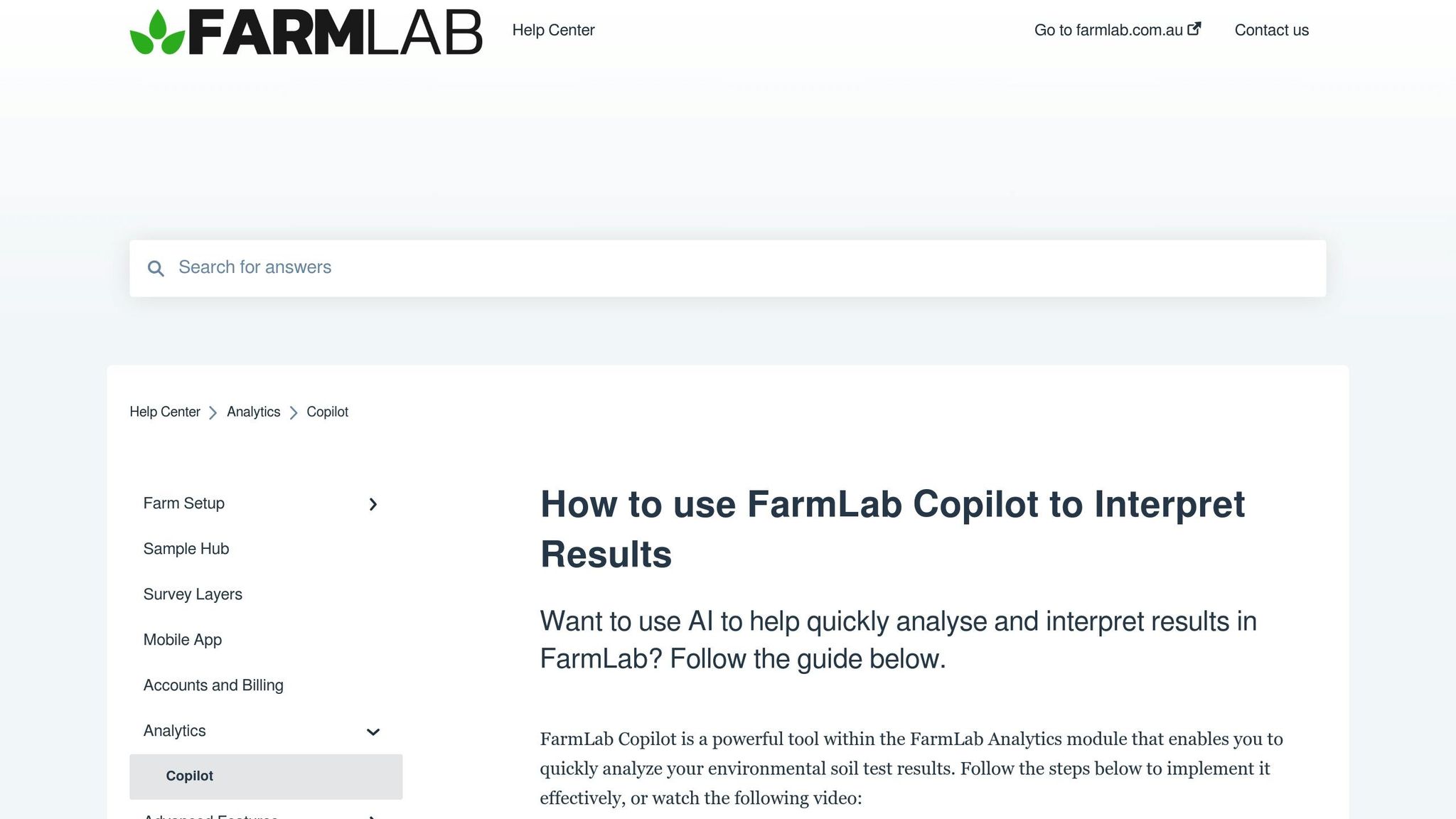

FAQs
How does machine learning enhance compost quality analysis compared to traditional methods?
Machine learning is transforming how we analyze compost quality by offering more precise predictions for crucial factors like nutrient levels, maturity, and decomposition efficiency. Traditional methods, which often depend on lengthy lab tests or manual checks, can't match the speed and scope of machine learning. This technology can process vast amounts of data in real time, revealing patterns and insights that might otherwise be overlooked.
Beyond improving accuracy, machine learning simplifies the entire assessment process. By fine-tuning variables like temperature, moisture, and aeration, it ensures consistently high-quality compost while cutting down on waste and inefficiencies.
What are the most effective machine learning models for analyzing compost quality, and how do they work?
When it comes to analyzing compost quality, some of the most effective machine learning models include Random Forest, XGBoost Regression, Decision Tree Regressor, Support Vector Regression, and Artificial Neural Networks. These tools focus on evaluating critical input factors such as temperature, feedstock composition, and moisture levels to predict essential metrics like compost maturity, nutrient content, and emissions.
These models rely on advanced techniques like regression analysis, ensemble learning, and neural networks to uncover patterns and refine the composting process. By using these methods, compost producers can make smarter, data-backed decisions to improve both quality and efficiency.
How can gardeners and landscapers use machine learning to improve compost quality and promote sustainability?
Gardeners and landscapers can use machine learning (ML) to fine-tune compost quality by analyzing critical factors like the carbon-to-nitrogen ratio, moisture levels, and microbial activity. This approach helps produce compost that's packed with nutrients while cutting down on waste.
ML can also forecast environmental effects, such as greenhouse gas emissions, allowing for smarter compost management that reduces pollutants. By tapping into these data-driven methods, you can boost sustainability and promote eco-friendly gardening practices tailored to meet your needs right here in the United States.
🎨 Visualize Your Dream Garden Today!
Transform any outdoor space into a professional landscape design in minutes. Just upload a photo, choose your style, and let our AI do the rest.
Start your garden transformation now →Related posts
Related Articles
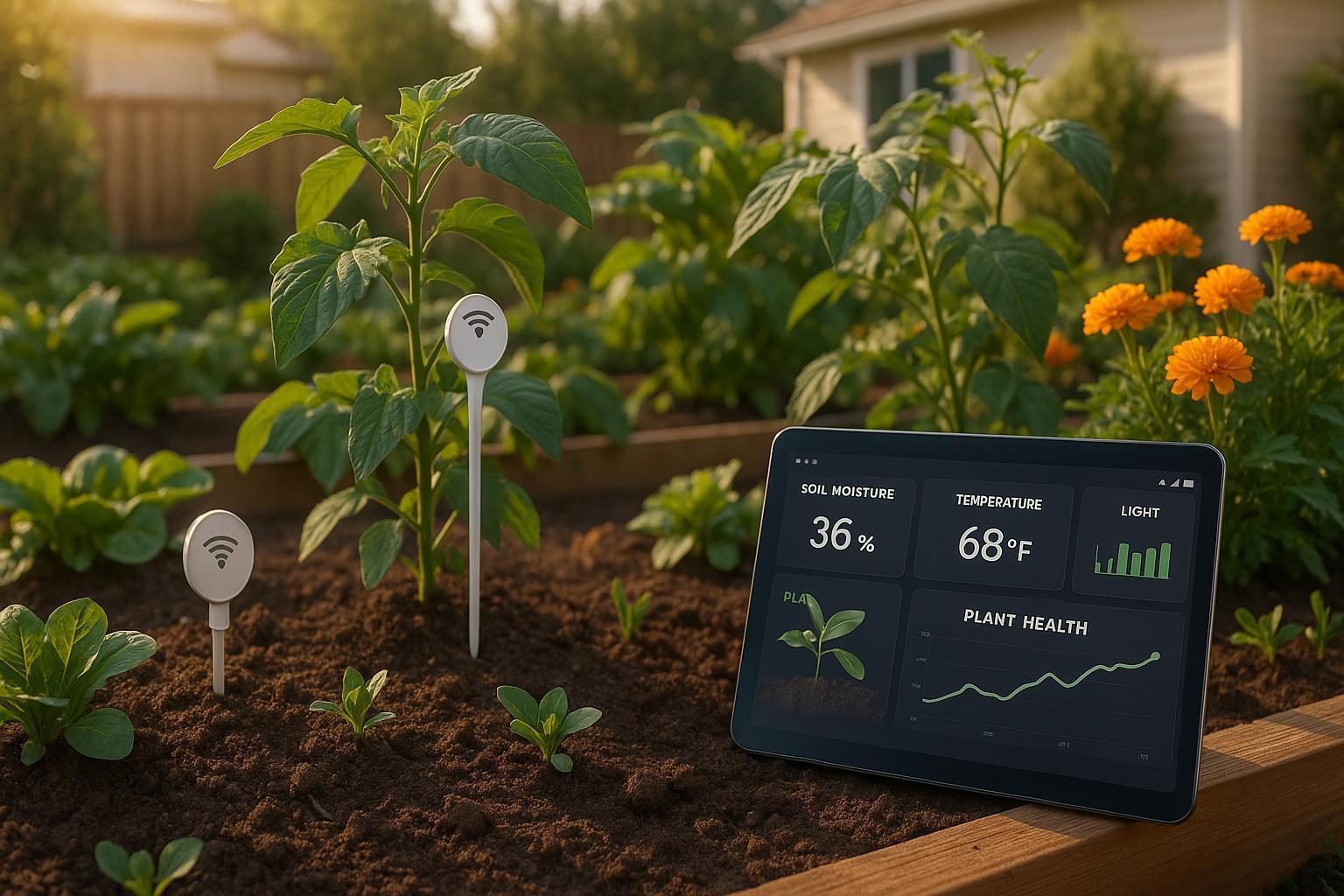
IoT Data Collection for Climate-Specific Gardening
Explore how IoT technology revolutionizes gardening by optimizing resource use, predicting diseases, and enhancing plant health for sustainable practices.
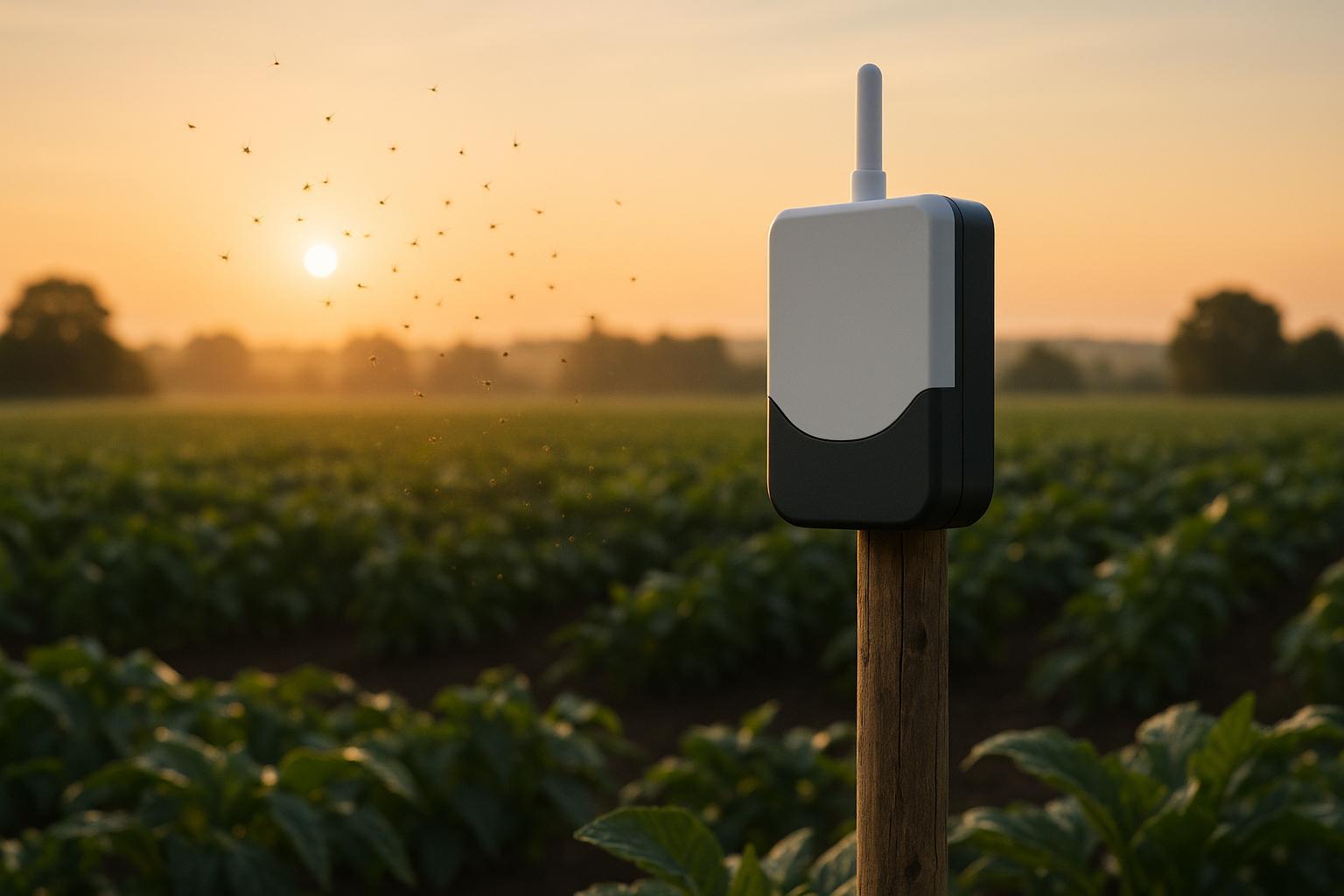
IoT Sensors for Pest Monitoring: Real-Time Data Explained
Explore how IoT sensors are revolutionizing pest monitoring in agriculture, providing real-time data for smarter, eco-friendly pest control.
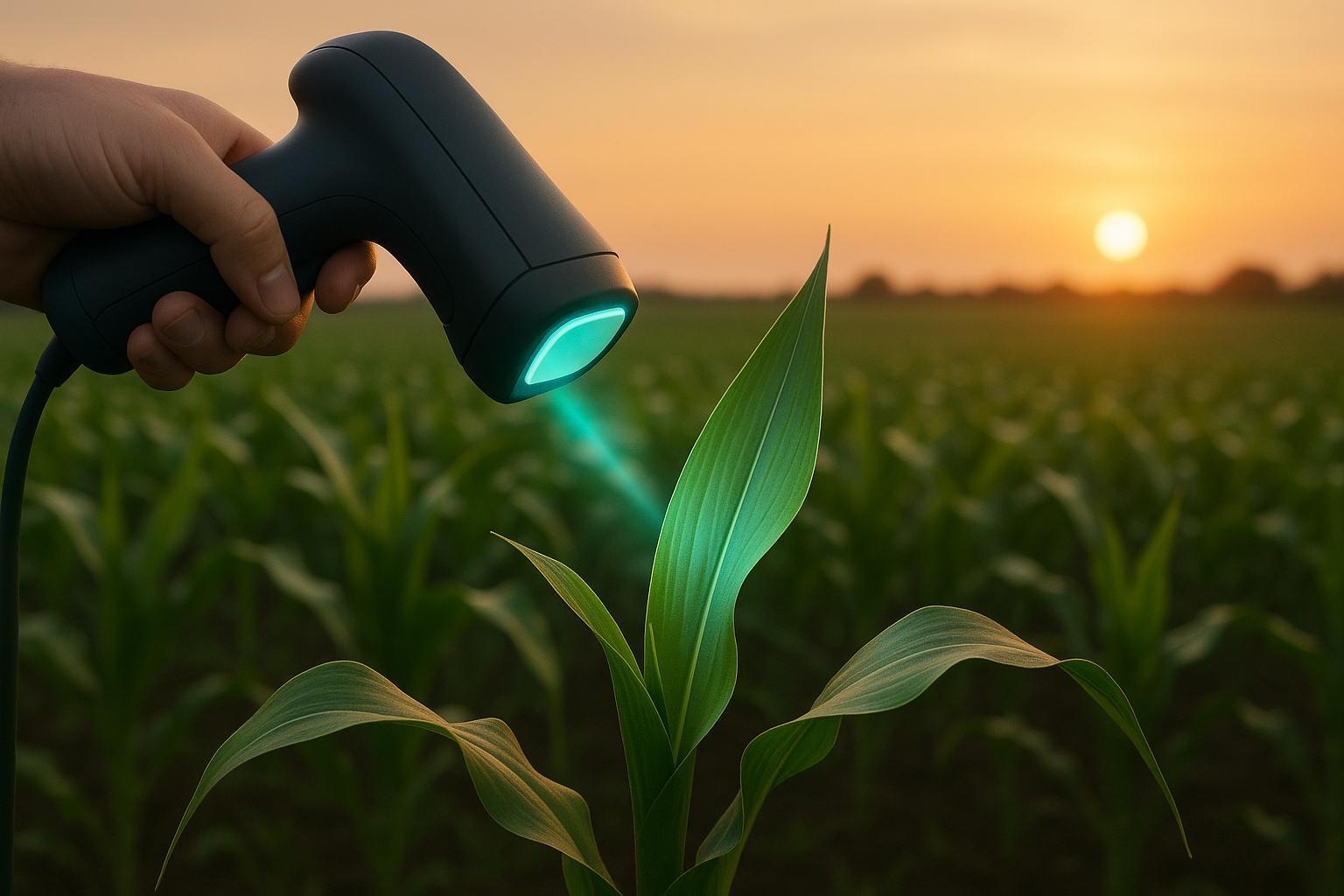
Imaging Techniques for Non-Destructive Disease Detection
Explore advanced imaging techniques revolutionizing non-destructive plant disease detection, enhancing early diagnosis and crop management.
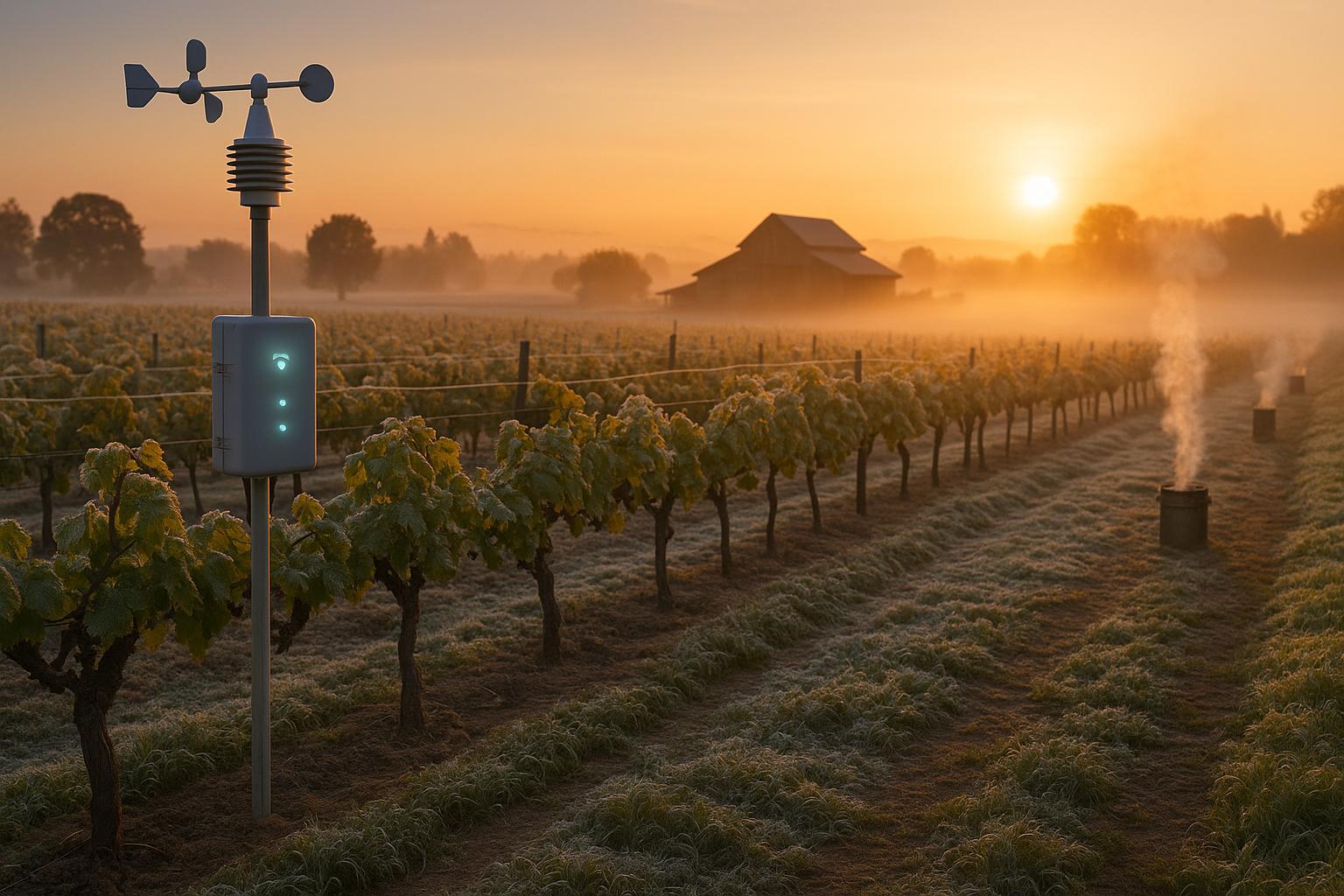
AI vs. Traditional Frost Protection
Explore the advantages of AI-driven frost protection systems over traditional methods, highlighting efficiency, accuracy, and long-term savings for farmers.

Top Free Landscape Design Apps: Visualize Your Dream Outdoor Space
Explore the best free landscape design apps that can help you plan and visualize your outdoor space. Learn about the features, benefits, and drawbacks of using these apps for landscaping.
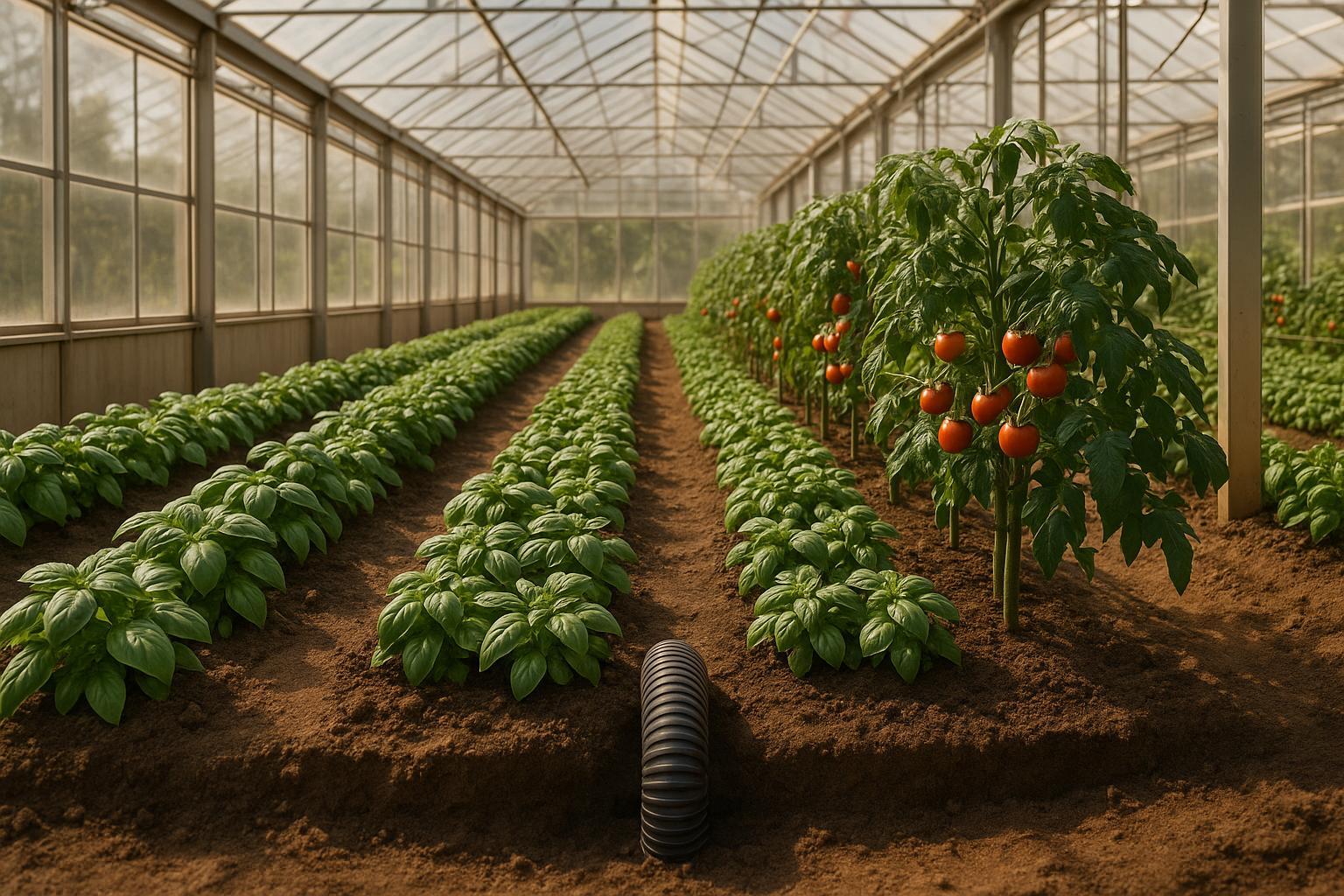
Companion Planting with Geothermal Climate Control
Explore how geothermal climate control enhances companion planting by creating optimal growing conditions, boosting yields, and reducing energy costs.